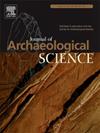The sedaDNA revolution and archaeology: Progress, challenges, and a research agenda
IF 2.6
1区 地球科学
Q1 ANTHROPOLOGY
引用次数: 0
Abstract
The uptake of sedimentary ancient DNA (sedaDNA) in archaeology appears to be rather behind that in areas such as palaeoecology, palaeolimnology and Quaternary sciences in general, and in contrast to the on-going revolution in palaeogenomics from skeletal material. From our experience of a high level of requests for sedaDNA analyses and general enquiries, we ascribe this so a knowledge-gap in the bioarchaeology and environmental archaeology sub-disciplines. This paper aims to address this by; providing a review of sedaDNA research in archaeology including taphonomic considerations by environmental context types, sampling and analytical considerations, quality control and authentication, and combined analysis with other proxies. Key areas of emerging archaeological application include a much deeper understanding of hunter-gatherer landscape interactions, the environments of early agriculture, domestication, disease and pandemics, field systems and agricultural revolutions. The high taxonomic precision of sedaDNA metabarcoding also provides new approaches to human migration since people migrate with their food cultures. It is hoped that this will encourage archaeological scientists to enter this research field, which is currently short of trained personnel. The paper also sets out the major challenges that are faced in the further application of sedaDNA, and potentially sedaRNA, in archaeology and also possible solutions and avenues for fruitful research. It is argued that sedaDNA, although immensely powerful, is still at present best used in combination with traditional areas of archaeobotany and archaeozoology. However, the emerging possibilities of both palaeo-phylogenetics and functional palaeogenetics are sign-posts to a deeper application that could constitute a revolution in archaeological science.
dna革命和考古学:进展、挑战和研究议程
考古学对沉积古DNA (sedaDNA)的吸收似乎远远落后于古生态学、古湖湖学和第四纪科学等领域,与骨骼材料的古基因组学正在进行的革命形成对比。根据我们对sedaDNA分析和一般查询的高水平要求的经验,我们将其归因于生物考古学和环境考古学子学科的知识差距。本文旨在解决这一问题;综述了考古学中的sedaDNA研究,包括环境文脉类型的地图学考虑、采样和分析考虑、质量控制和认证以及与其他代理的结合分析。新兴考古应用的关键领域包括对狩猎-采集者景观相互作用、早期农业环境、驯化、疾病和流行病、田间系统和农业革命的更深入理解。sedaDNA元条形码的高分类精度也为人类迁移提供了新的途径,因为人类是随着他们的饮食文化迁移的。希望这将鼓励考古学家进入这一研究领域,目前这一领域缺乏训练有素的人才。本文还列出了sedaDNA在考古学中进一步应用所面临的主要挑战,以及潜在的sedaRNA,以及可能的解决方案和富有成效的研究途径。有人认为,尽管sedaDNA非常强大,但目前最好还是与传统的考古植物学和考古动物学结合使用。然而,古系统发育学和功能古遗传学这两种新出现的可能性,是一种可能构成考古科学革命的更深层次应用的标志。
本文章由计算机程序翻译,如有差异,请以英文原文为准。
求助全文
约1分钟内获得全文
求助全文
来源期刊

Journal of Archaeological Science
地学-地球科学综合
CiteScore
6.10
自引率
7.10%
发文量
112
审稿时长
49 days
期刊介绍:
The Journal of Archaeological Science is aimed at archaeologists and scientists with particular interests in advancing the development and application of scientific techniques and methodologies to all areas of archaeology. This established monthly journal publishes focus articles, original research papers and major review articles, of wide archaeological significance. The journal provides an international forum for archaeologists and scientists from widely different scientific backgrounds who share a common interest in developing and applying scientific methods to inform major debates through improving the quality and reliability of scientific information derived from archaeological research.
 求助内容:
求助内容: 应助结果提醒方式:
应助结果提醒方式:


